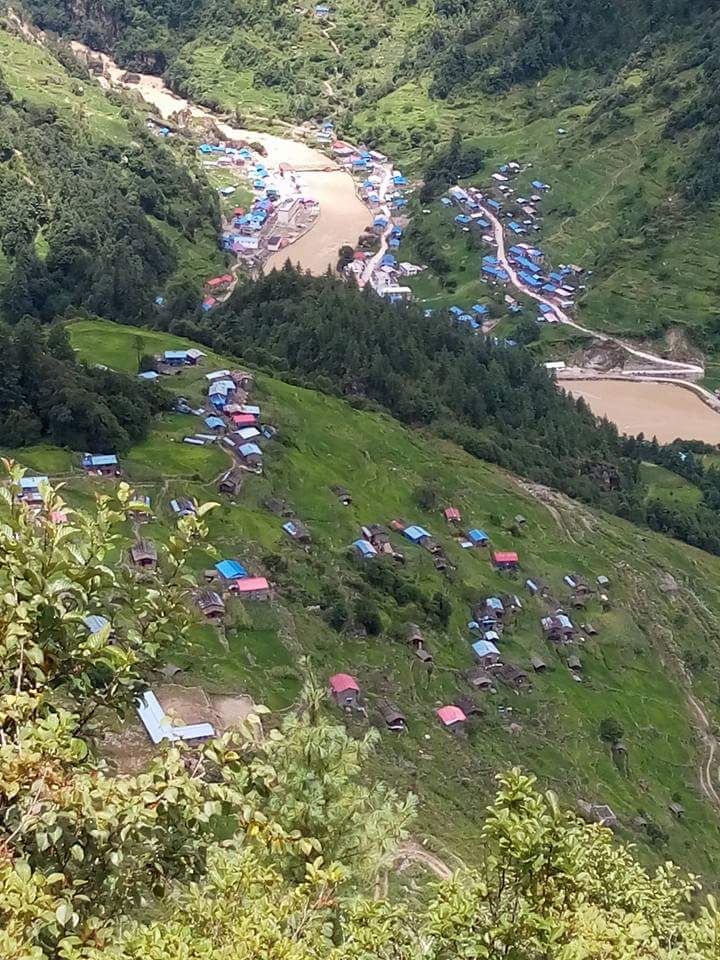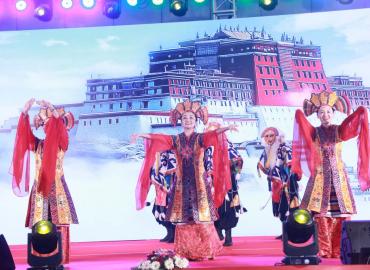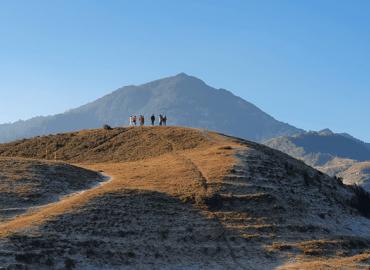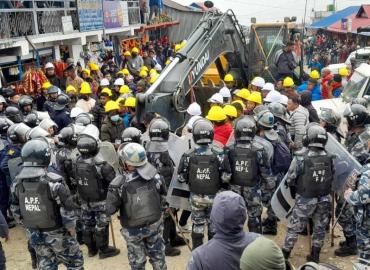Itahari:Roshan Adhikari, the first paragliding operator in Province one, was elated as and when he heard China announced 'Nepal Tourism Promotion Year 2017'. There were multiple reasons for his visible excitement at this news. 'I know Chinese love paragliding in Nepalese skies and I haven't got a single client to fly from China while I am getting dozens of Indian clients from bordering areas of India', explains this Dharan-based tourism entrepreneur, 'after this Nepal-centric state-level tourism promotion program by Chinese government I was sure to see more Chinese clients like in Pokhara.'
The first and only government-registered rafting service provider in Province One, Suresh Basnet shares similar sentiment of paragliding operator Adhikari. Basnet says his company River Deep Rafting has served many Indians and westerners working in various INGOs in the region but hasn't seen a single client from China. 'My company has served people from thousands of miles away but hasn't served Chinese clients despite our land connectivity', says this retired government teacher and Itahari-based tourism entrepreneur, ' still, I have pinned my hopes on China's announcement of 'Nepal Tourism Promotion Year 2017' as this could shed lights on the world-class rafting rivers we work on like Tamor, Arun ,Sunkoshi and Saptakoshi.'
These two tourism entrepreneurs' happiness over prospects of Chinese tourists is in decreasing order. They say it is all owing to negligence from state level. 'At a time when our virgin touristic services are advertised in China, our government couldn't construct road connecting Nepal and China', says Adhikari, now a recently elected Chairperson of Dharan Sub-Metropolitan City's Ward Number 1 of Sunsari districtadding,' air route is long and expensive and the only option to make footfall of Chinese tourists is the speedy operation of Kimanthanka border crossing with China.'
Kimanthanka: A long-cherished dream of East Nepal
Not just after China-announced 'Nepal Tourism Promotion Year 2017', talks on functional Kimanthanka border crossing are always mainstream issue in the region. Experts say Kimanthanka is one of the few northern border crossing having human settlement and laying in low altitude compared to other possible northern border crossing with China. Kimanthanka border crossing was widely talked when India imposed 2-month-long trade embargo in 2015 forcing Nepal to include Indian inputs in Nepal's constitution promulgated by sovereign body of Constituent Assembly. In last week of 2015, the then Prime Minister KP Sharma Oli hadpublicly pledged that Kimanthanka-Biratnagar roadways would be functional within two years. However, this statement has not been materialized even after two years and locals of this region are pressing government to expedite construction works. Before blockade also, Kimanthanka was a top priority project between Nepal and China. In 2012, visiting Chinese Premier Wen Jiabao announced 12 billion rupees of assistance for multiple projectsthat included making six northern border ports including Kimanthanka- Dingri.
Kimanthanka- Jogmani is also an incrediblebusiness route between China and Indiavia Nepal. This 390-kilometer road distance is still incomplete and much of it is in northern side. Months ago, Nepal Army airlifted two excavators and tractors to expedite construction of roadways to Kimanthanka from Khandbari. Khandbari is accessed via roadways from Jogbani and now works are in progress to link 163-kilometer roadways from Sankhuwasabha to Kimanthanka. China has already built roadways close to Kimanthanka while Nepali side is just working on opening tracts for 4-lane roadways. According to North-South Koshi Highway Project, around 68 kilometer track from Khandbari is left to construct to reach roadways to Kimanthanka.
'Kimanthanka can be a boon for East Nepal's trade and tourism'
Until now, Koshi Zone of Nepal imports almost everything from Indian border crossing of Jogbani. Imports from this Indian route includes Chinese itemsshipped from China to Calcutta port and again from Calcutta to Jogbani via land route. Another irony is that, even the locals of Sankhuwasabha, the bordering and biggest district of Koshi Zone, are also compelled to purchase India-imported goods. 'At a time when India imposed trade blockade, we were troubled as we couldn't purchase fuels and daily essentials imported from India', says Pashang Sherpa, local of Khandbari, the district headquarters of Sankhuwasabha, 'this couldn't have been the case had there been functional Kimanthanka port as it is so close to us than Jogbani, something 300-kilometer road distance from here.'
Traders and business leaders opine that functional Kimanthanka port can change current trade route in East Nepal. Lilam Basnet, a regional business leader, says Kimanthanka can reverse South-North trading culture of Koshi Zone of Province One. 'These days, folks from northern hilly districts descent plain Terai to purchase daily essentials and Chinese-made electronic goods', explains Basnet, 'if developed in 4-lane North-South expressway, Kimanthanka can be a boon for our region and Sankhuwasabha can be a business center making Chinese items cheaper.' According to Basnet, land connectivity between Nepal and China via Kimanthanka can end Indian trade monopoly and Nepal wouldn't have to bear another brunt of probable Indian trade embargo. 'Once this port is commercially operated as government-made plans, Nepal can enjoy huge trade and transit benefits with world's apex economy China as Oli Government has already signed TTA with China', explains Basnet, 'land connectivity with China also helps to bring in mass Chinese tourists and we can sell our world-class touristic destinations of this region like Mt. Everest, Mt. Makalu, Rafting in Tamor and Arun, paragliding from Bhedetar, touring world's deepest valley of Arun, among others.'
Tourism entrepreneurs in Province One say there would be spiked increase in Chinese tourist arrival if Kimanthanka is operated during this 'Nepal Tourism Promotion Year 2017'. 'In 2016, 104005 Chinese tourist visited Nepal mostly from airways but 118249 Indian tourists came to Nepal mostly by land routes', says Radheshyam Poudel, owner of Province One's famed Gokulam Resort of Sundarharaicha, Morang, 'this figures show that Province One would receive mass inflows of Chinese tourists via Kimanthanka if this is to function at the soonest making revolutionary increase in tourism revenues in East Nepal.'






















